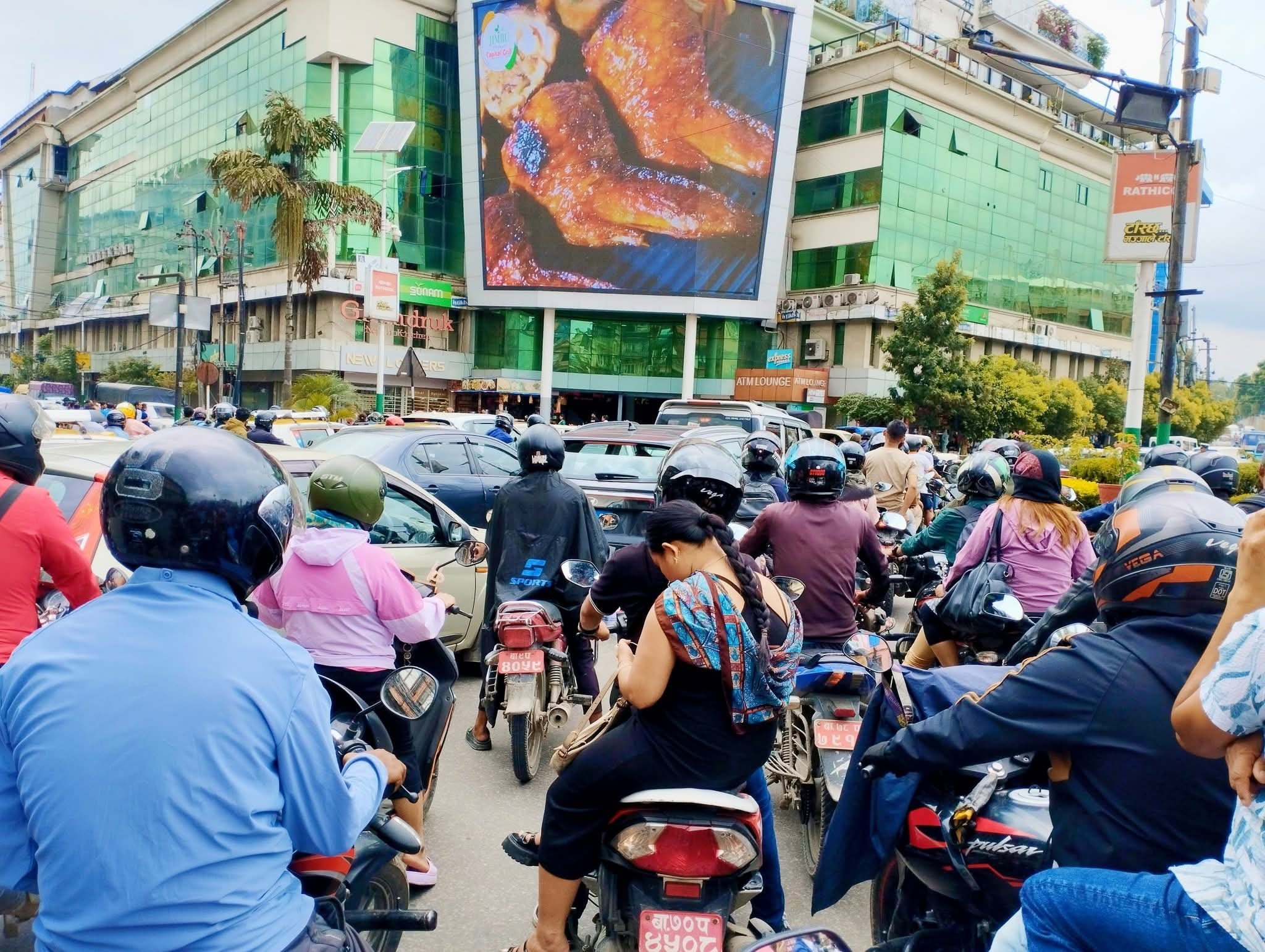Kathmandu, August 17, 2025
Every day in Kathmandu Valley, 1,700 traffic police stand at intersections, manually directing the relentless tide of vehicles. Yet the result is hours-long gridlock, honking chaos, and suffocating air. The capital city of a sovereign nation is functioning on a traffic management system that belongs to the last century.
While the rest of the world is moving ahead with intelligent transport systems, synchronized traffic lights, AI-driven traffic monitoring, and real-time navigation updates, Nepal’s government remains inexplicably stuck in the past. Not a single functioning traffic light regulates the flow in one of the country’s busiest urban centers.
This is more than an inconvenience - it is a daily erosion of productivity, public health, and quality of life. Businesses lose valuable hours. Ambulances struggle through congestion. Pollution levels soar. Citizens breathe frustration as much as smog.
Kathmandu does not lack human resources - it lacks vision. A modern city cannot be run by waving hands and blowing whistles in the middle of the road. The world has proven that smart infrastructure is not a luxury; it is a necessity.
The government must ask itself: how much longer will Nepal’s citizens pay the price for outdated thinking? The future is already here - but Kathmandu’s traffic management is still waiting for a green light.